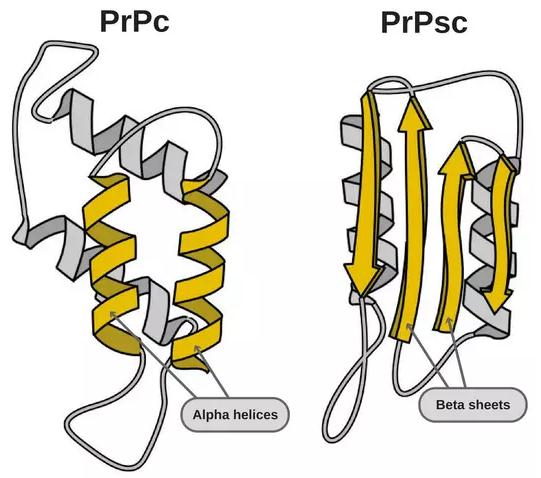L06 Virus and Other Acellular Infections Agents
一、Virus
Major cause of disease
- new viruses are emerging
- also importance as a new source of therapy
Important in evolution
- transfer genes between bacteria, others
Important model systems in molecular biology
General Properties of Viruses
- complete virus particle
- consists of ≥1 molecule of DNA or RNA enclosed in coat of protein
- may have additional layers
- cannot reproduce independent of living cells nor carry out cell division
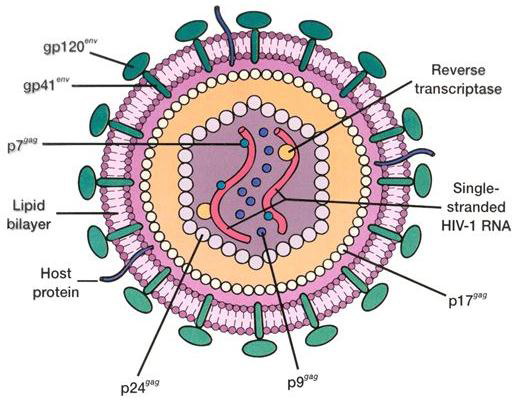
Virions Infect All Cell Types
Bacterial viruses called bacteriophages (phages)
- Few archaeal viruses
- Most are eukaryotic viruses:
- plants, animals, protists, and fungi
- Classified into families based on
–genome structure, life cycle, morphology, genetic relatedness
Exists in the intracellular or extracellular phase
二、The Structure of Viruses
The virus morphology include size, shape, presense of envelop
Virion size range is ~10–400 nm in diameter
All virions contain a nucleocapsid(核壳体) which is composed of nucleic acid (DNA or RNA) and a protein coat (capsid)
- some viruses consist only of a nucleocapsid, others have additional components
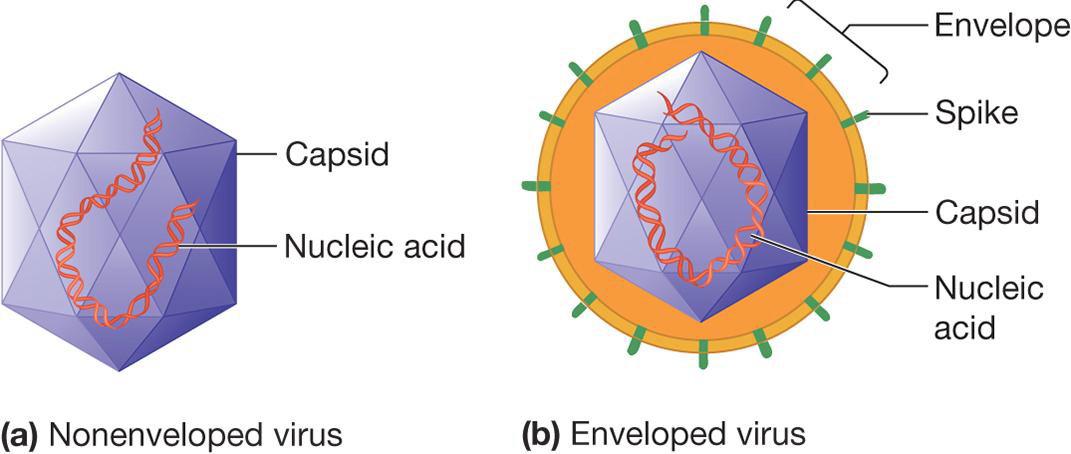
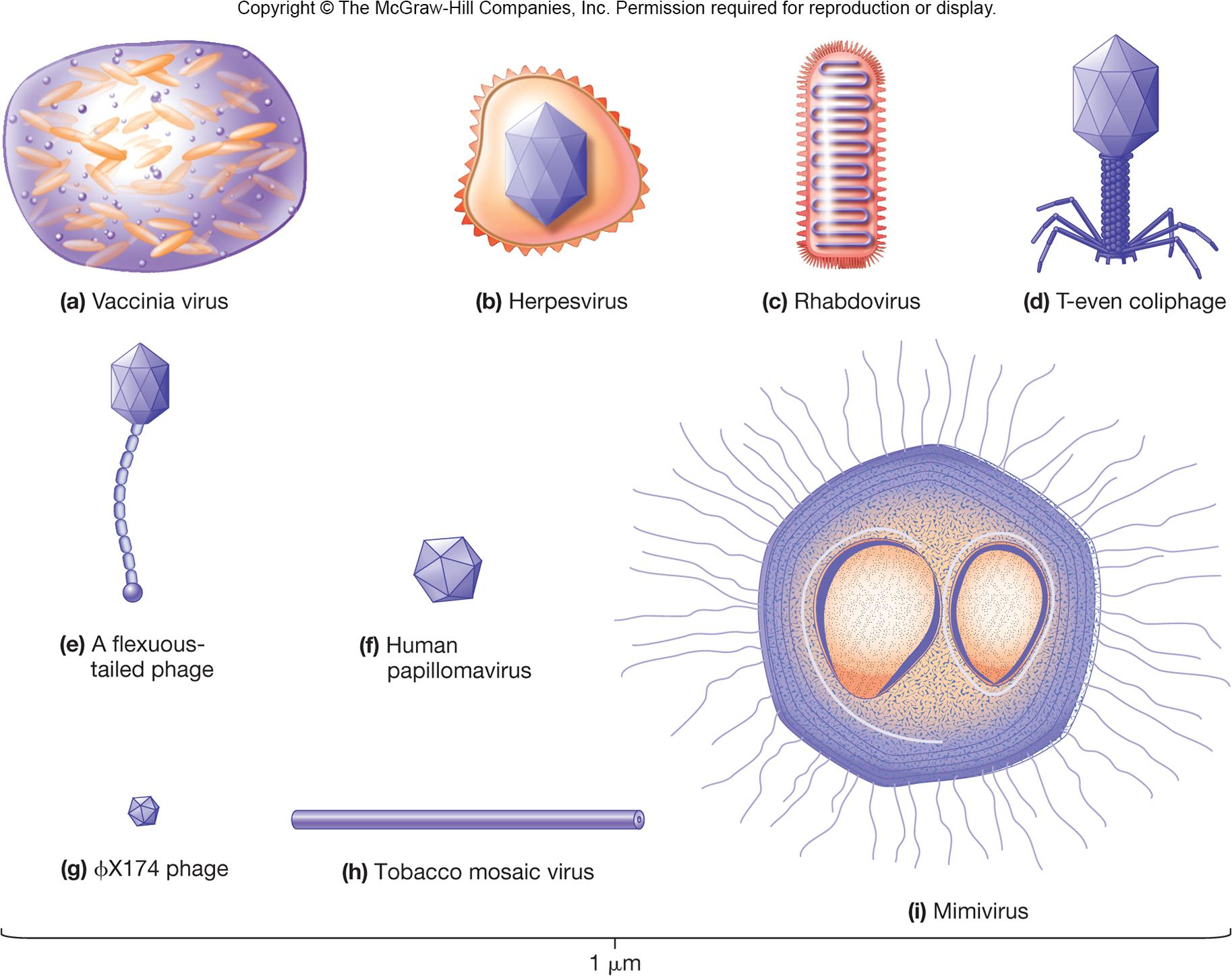
Capsids 衣壳
Large macromolecular structures which serve as protein coat of virus
Protect viral genetic material and aids in its transfer between host cells
Made of protein subunits called protomers(原体)
Capsids are helical, icosahedral, or complex
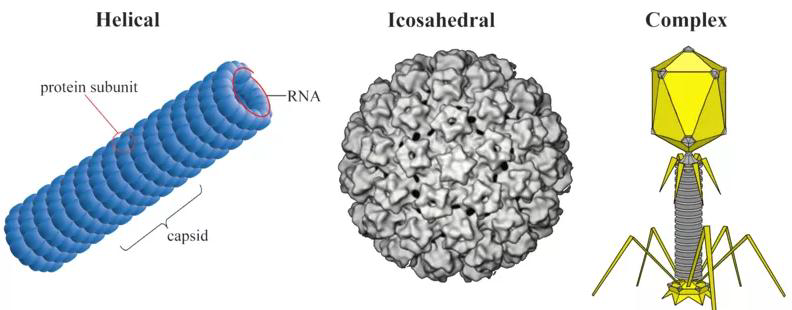
1. Helical Capsids
Shaped like hollow tubes with protein walls
Protomers self assemble
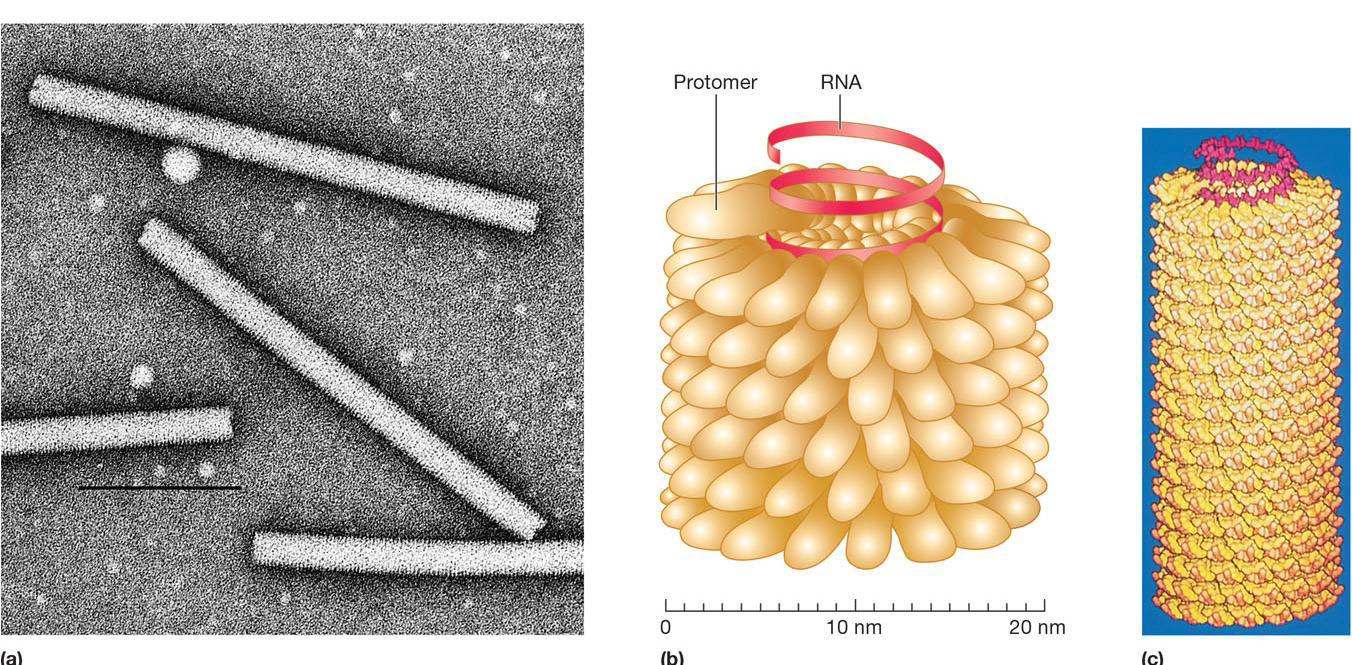
2. Icosahedral(二十面体) Capsids
An icosahedron is a regular polyhedron with 20 equilateral faces and 12 vertices
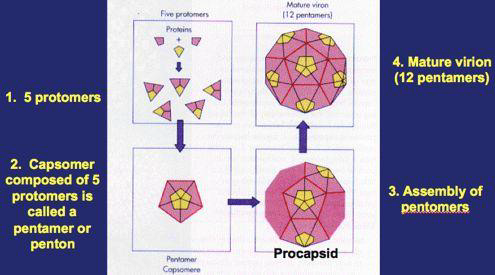
Capsomers 壳粒;病毒壳粒
- ring or knob-shaped units made of 5 or 6 protomers
- pentamers (pentons([病毒]五邻体)) – 5 protomers
- hexamers (hexons([病毒]六邻体)) – 6 protomers
3. Capsids of Complex Symmetry
Some viruses do not fit into the category of having helical or icosahedral capsids
poxviruses(痘病毒)
largest animal virus
痘病毒(Poxviridae,pox=发疹的病)为哺乳动物的最大及最复杂的病毒
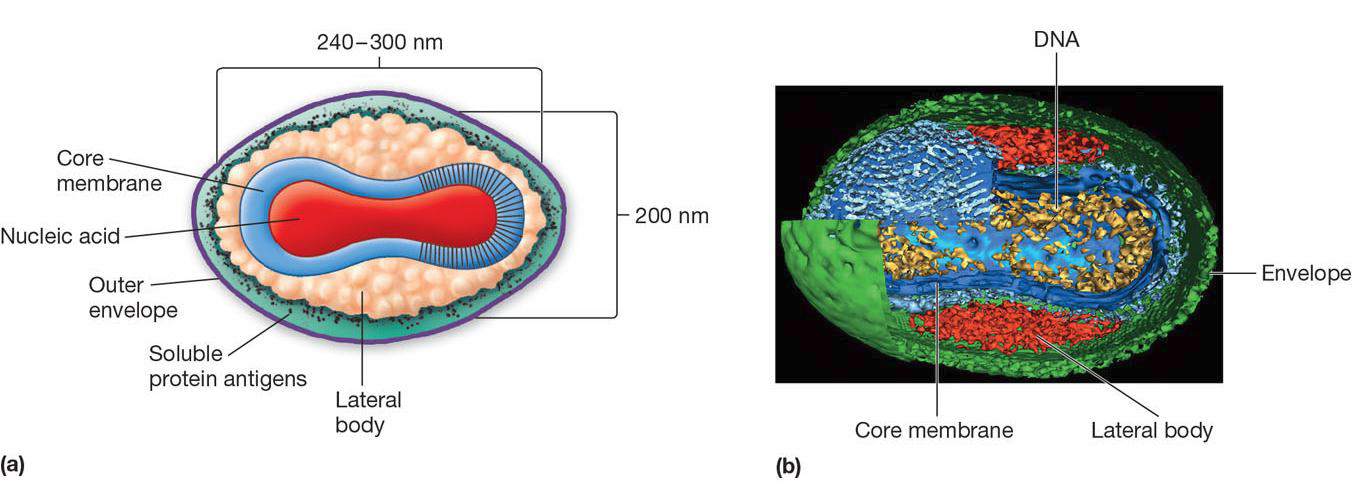
large bacteriophages – binal symmetry
head resembles icosahedral, tail is helical
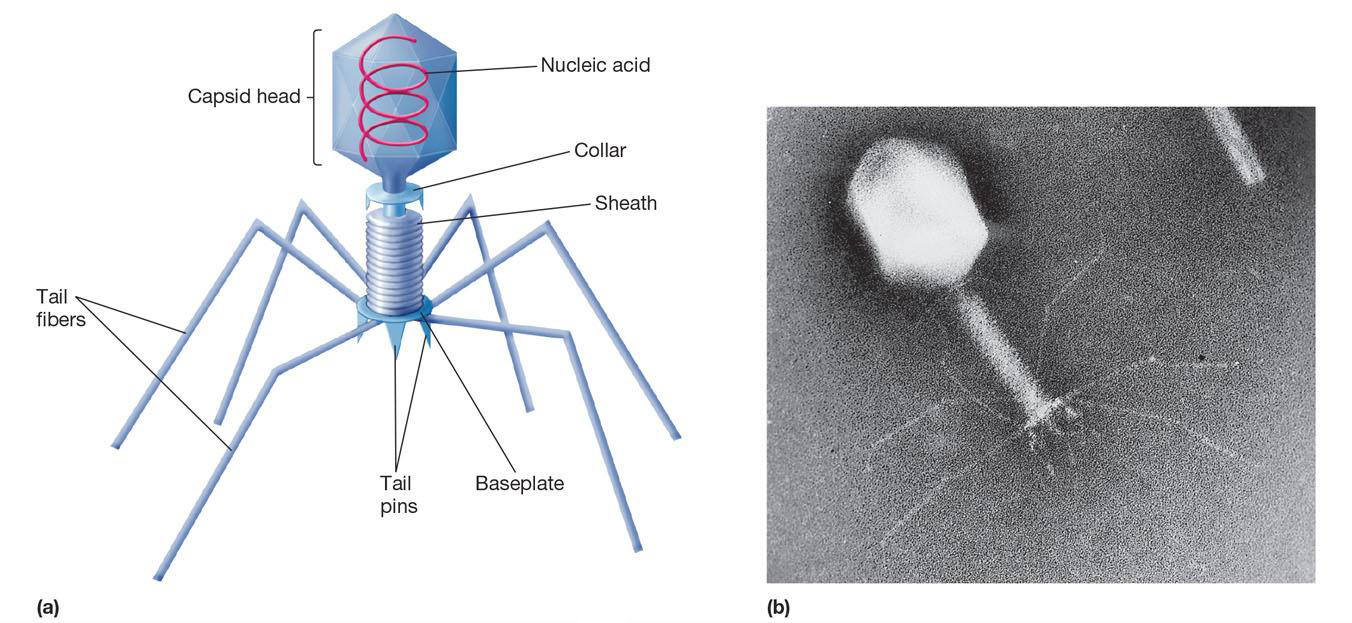
Viral Envelopes
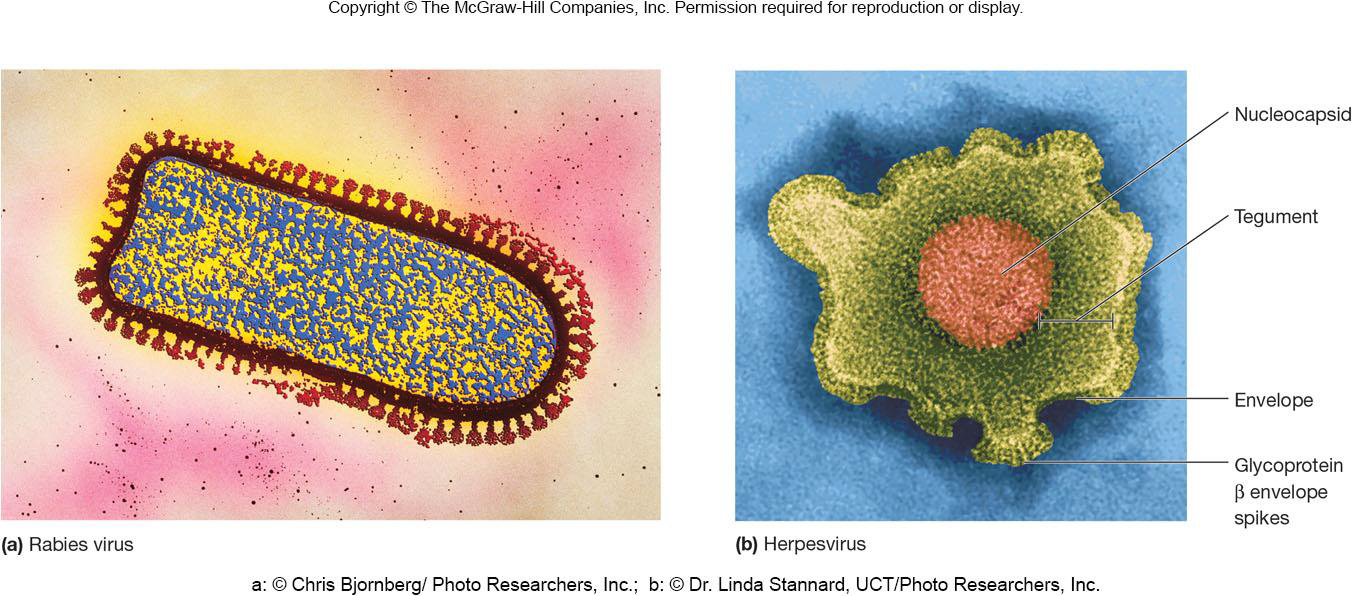
Many viruses are bound by an outer, flexible, membranous layer called the envelope
Animal virus envelopes (lipids and carbohydrates) usually arise from host cell plasma or nuclear membranes
1. Envelope proteins
Envelope proteins, which are viral encoded, may project from the envelope surface as spikes or peplomers
- involved in viral attachment to host cell
•e.g., hemagglutinin(红细胞凝集素) of influenza virus - may have enzymatic or other activity
•e.g., neuraminidase(神经氨(糖)酸苷酶,唾液酸苷酶) of influenza virus - may play a role in nucleic acid replication
- used for identification of virus (H1N1, H5N1, etc.)
Virion Enzymes
It was first erroneously thought that all virions lacked enzymes
Now accepted that a variety of virions have enzymes
- some are associated with the envelope or capsid but most are within the capsid
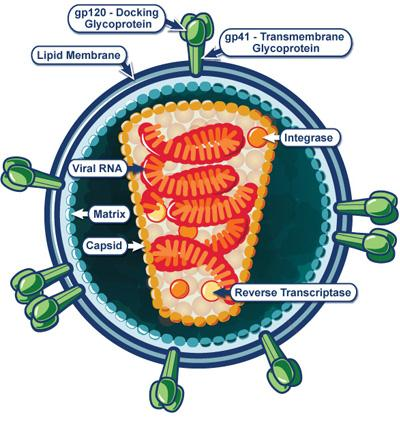
并不是所有的病毒内部都有酶,但是有酶的占多数
some are associated with the envelope or capsid but most are within the capsid
most of enzymes are about nucleic acid replication
Viral Genome
病毒的遗传物质可以是dsDNA、ssDNA、dsRNA、ssRNA (A virus may have single or double stranded DNA or RNA)
The length of the nucleic acid also varies from virus to virus
Genomes can be segmented or circular
三、Viral Multiplication
Mechanism used depends on viral structure and genome
Steps are similar
- attachment to host cell 附着于宿主细胞
- entry
- uncoating of genome
- synthesis
- assembly
- release
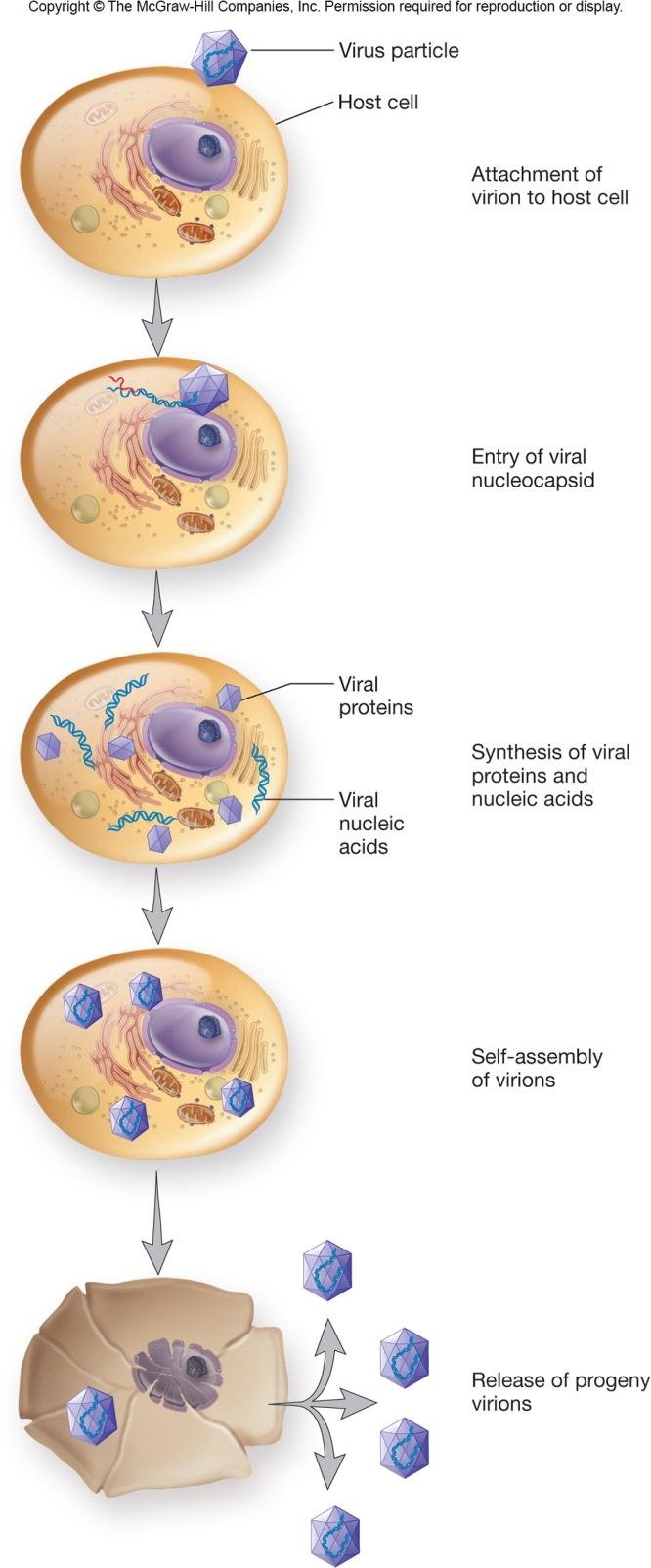
Attachment (Adsorption(吸附(作用)))
Specific receptor recognition and attachment,
Receptor determines host preference
- may be specific tissue (tropism(向性))
- may be more than one host
- may be more than one receptor
- may be in lipid rafts providing entry of virus
Viral Entry and Uncoating
Varies between naked or enveloped virus
Three methods used
- injection of nucleic acid
- fusion of the viral envelope with host membrane; nucleocapsid enters
- endocytosis in vesicle; endosome aids in viral uncoating
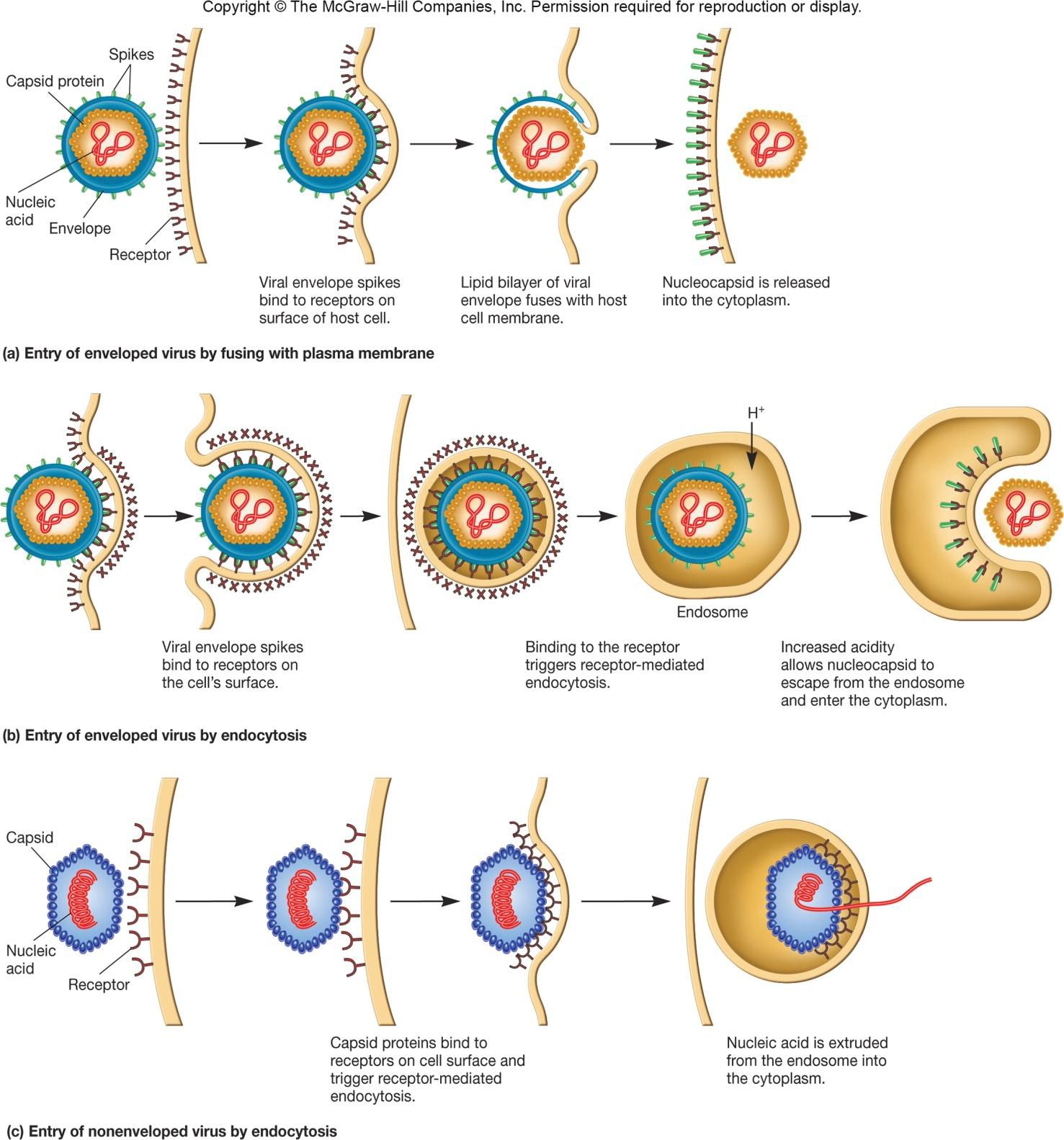
Synthesis Stage
Genome dictates the events
ds DNA typical flow
RNA viruses
- virus must carry in or synthesize the proteins necessary to complete synthesis
Stages may occur, e.g., early and late
Assembly
Assembly is complicated but varies in the position: Some in the cytoplasm, some in the nucleus.
may be seen as paracrystalline(次晶) structures in cell
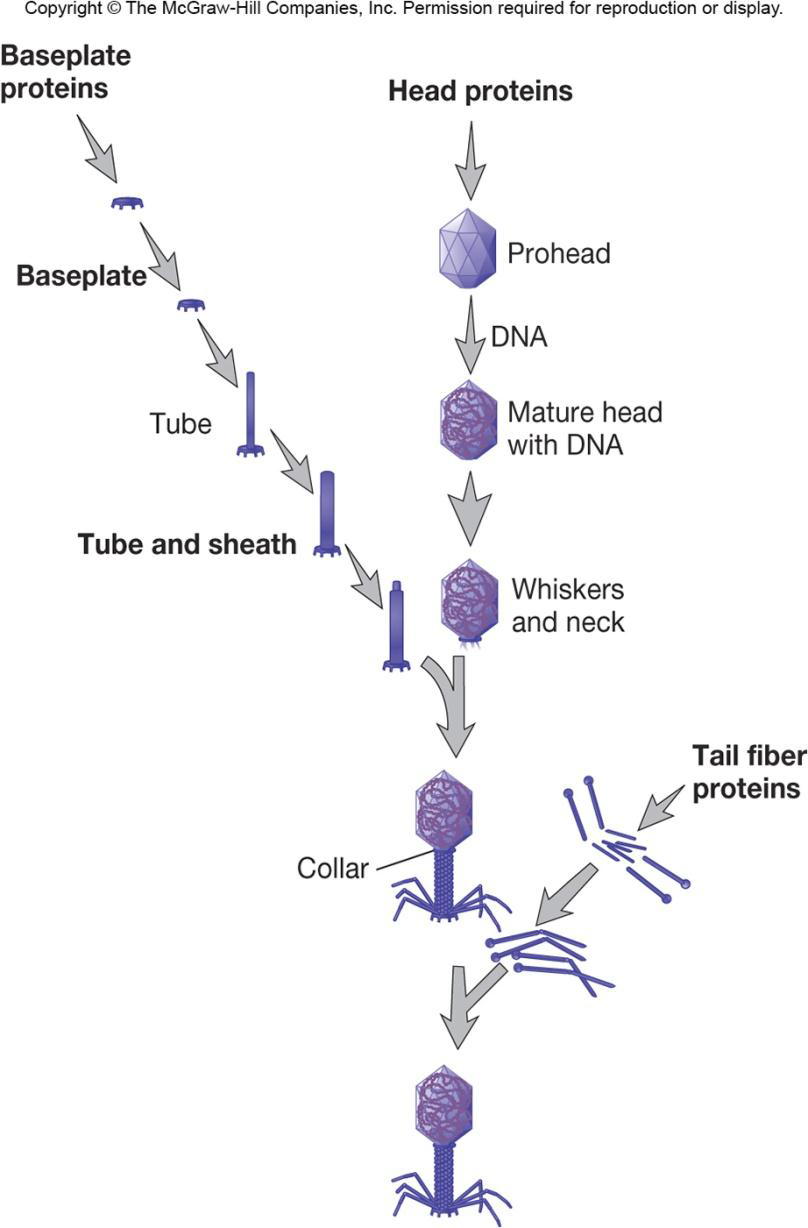
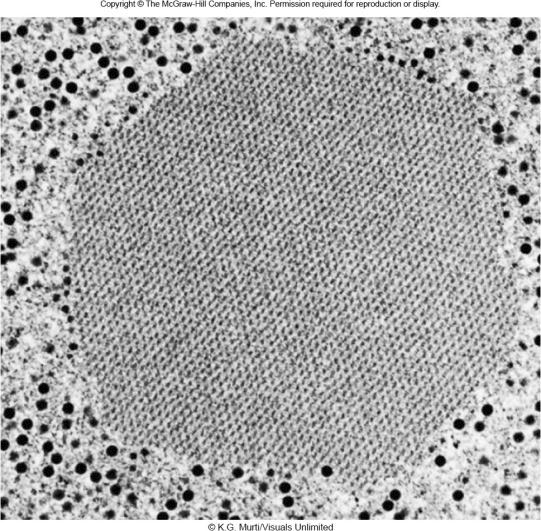
Virion Release
1. Nonenveloped viruses
Nonenveloped viruses lyse the host cell
viral proteins may attack peptidoglycan or membrane
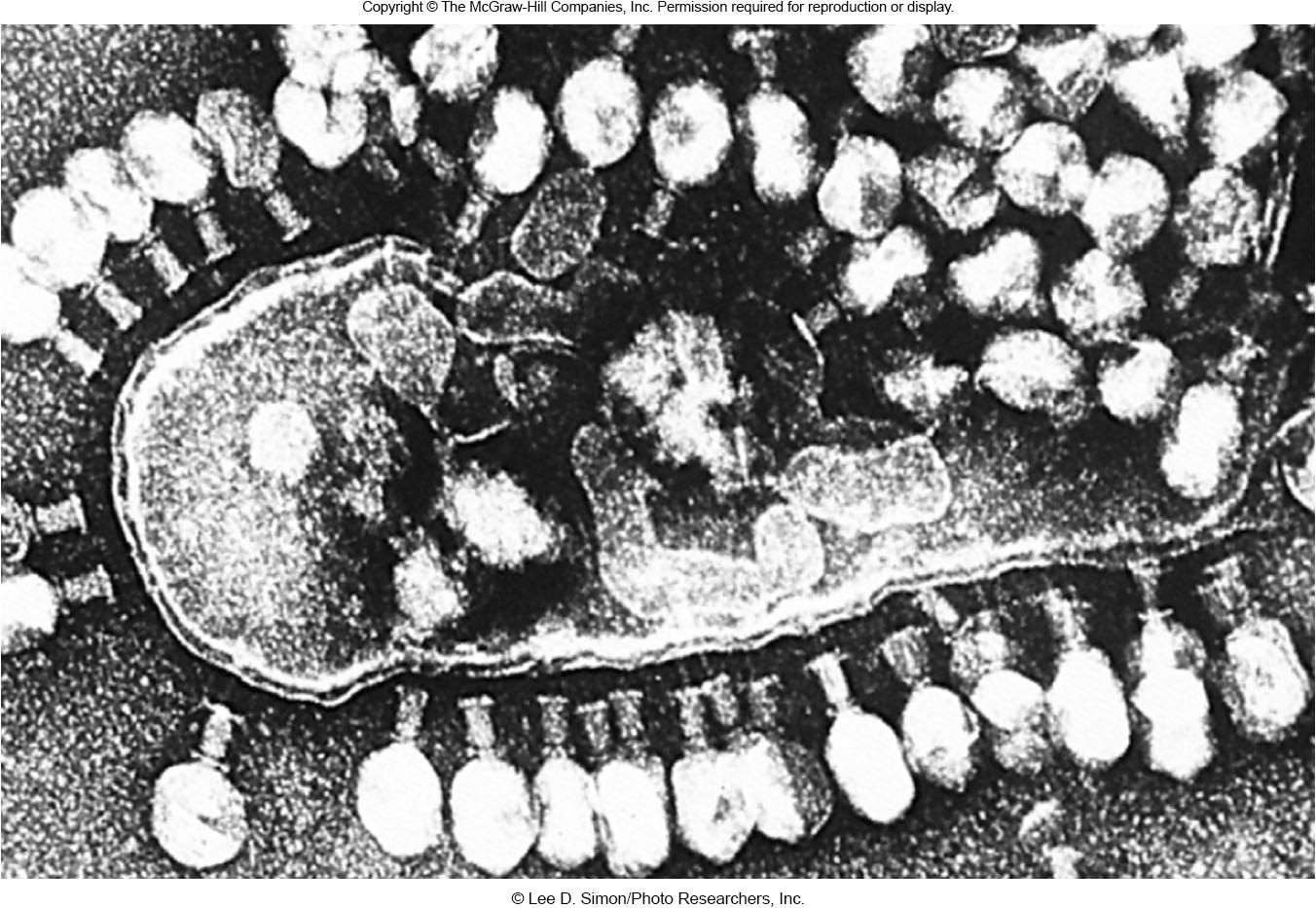
2. Enveloped viruses
Enveloped viruses use budding
- viral proteins are placed into host membrane
- nucleocapsid may bind to viral proteins
- envelope derived from host cell membrane, but may be Golgi, ER, or other
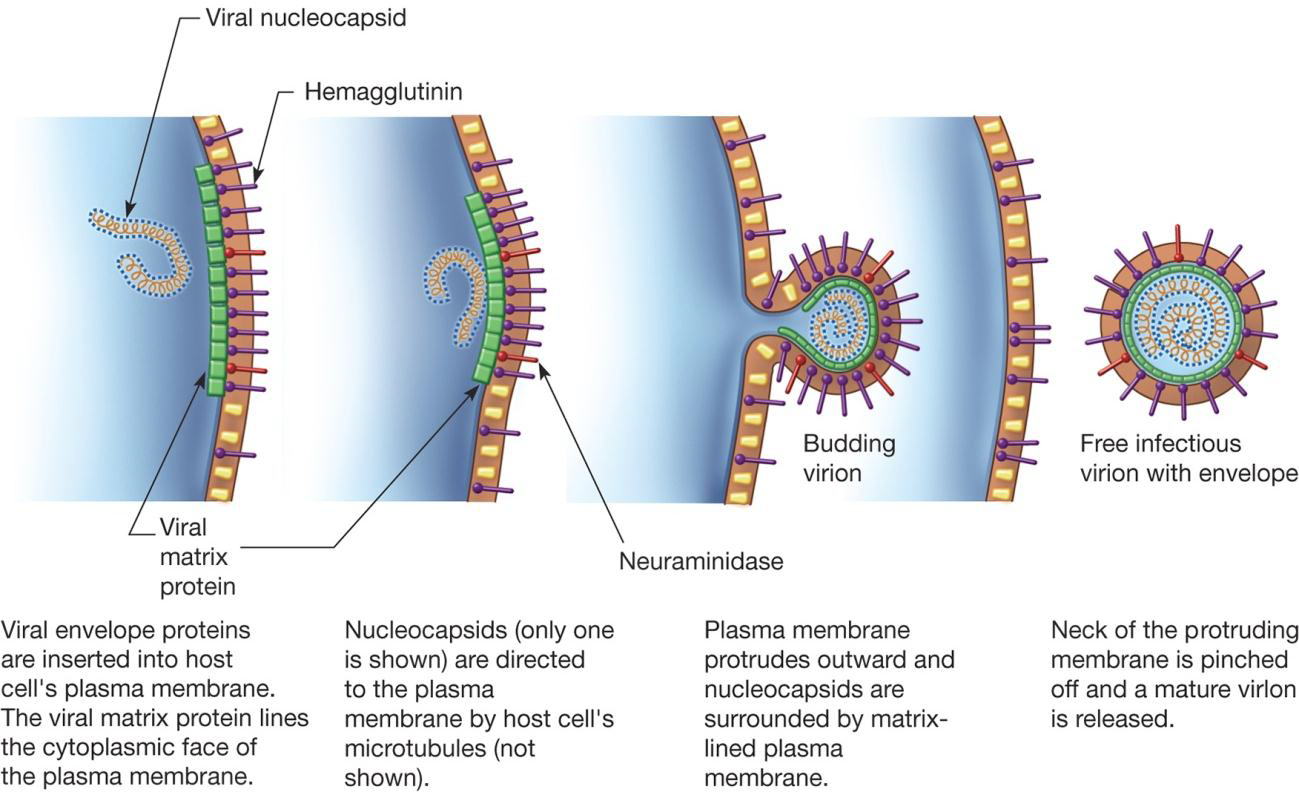
The One-Step Growth Curve

四、Types of Viral Infections
Bacterial and Archaeal Viral Infections
Virulent phages – one reproductive choice
- multiplies immediately upon entry
- lyses bacterial host cell
Temperate phages have two reproductive options
- reproduce lytically(溶解性地) as virulent phages do 亚丽好帅!!!
- remain within host cell without destroying it
- many temperate phages integrate their genome into host genome (becoming a ‘prophage(前噬菌体;噬菌体原)’ in a ‘lysogenic bacterium(溶原性细菌)’) in a relationship called lysogeny(溶源现象)
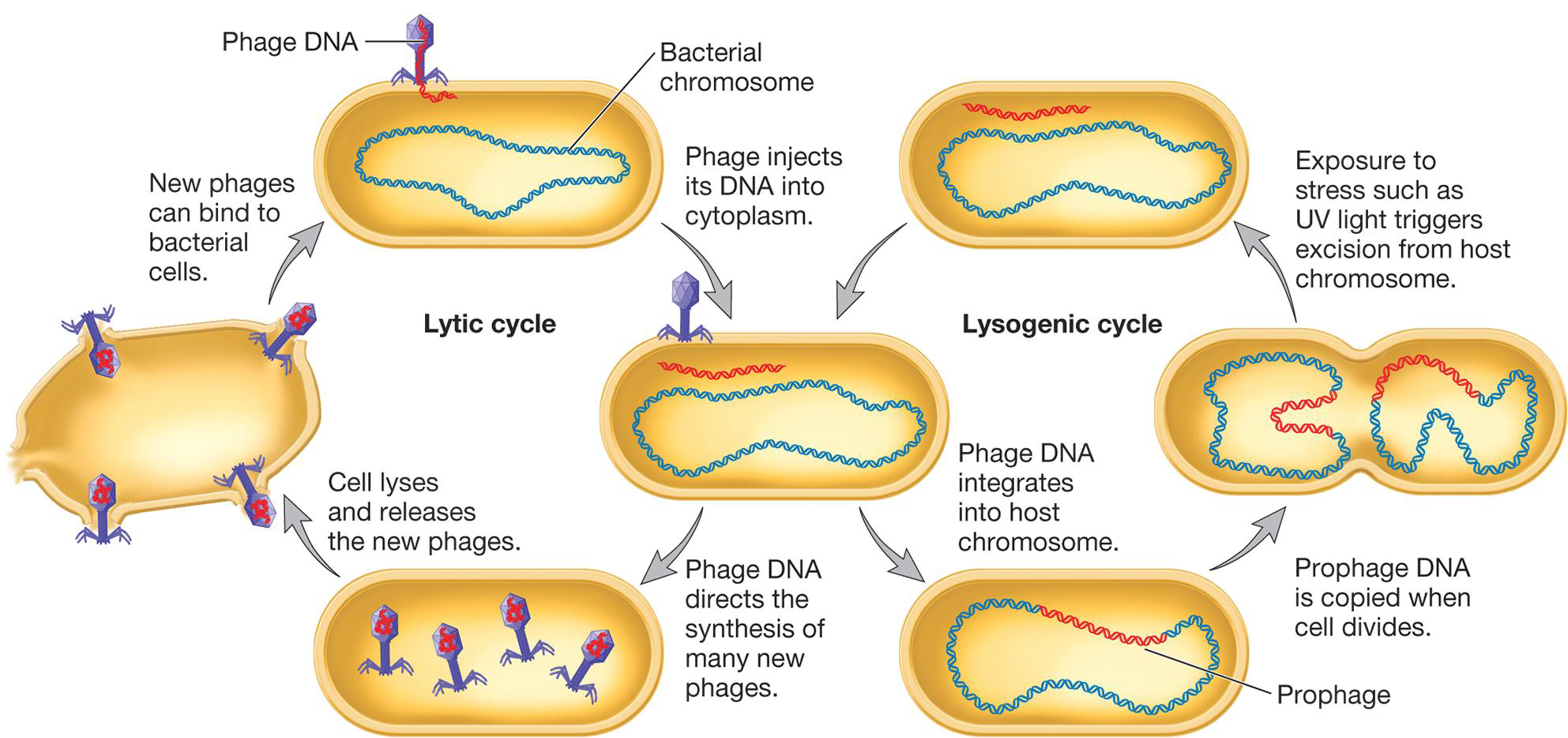
1. Archaeal Viruses
May be lytic or temperate
Most discovered so far are temperate by unknown mechanisms
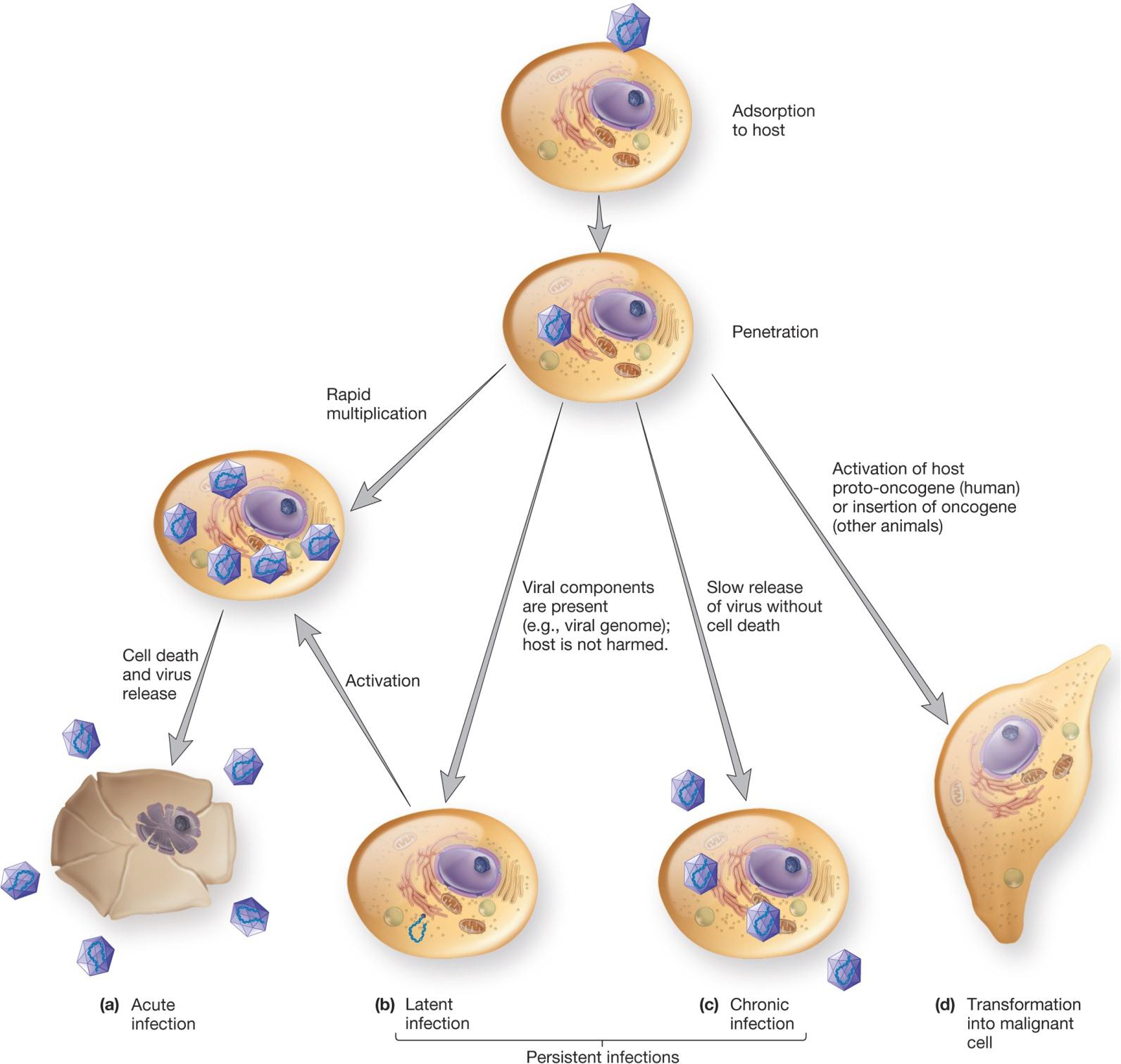
Viruses and cancer - Carcinogenesis 致癌作用
Carcinogenesis 涉及一系列基因,由病毒导致的Carcinogenesis原因可能为:
come from the virus OR may be transformed host proto-oncogenes (involved in normal regulation of cell growth/differentiation)
- Viral proteins bind host cell tumor suppressor proteins
- Carry oncogene into cell and insert it into host genome
- Altered cell regulation
- Insertion of promoter or enhancer next to cellular oncogene
并且常常涉及oncogenes(致癌基因)
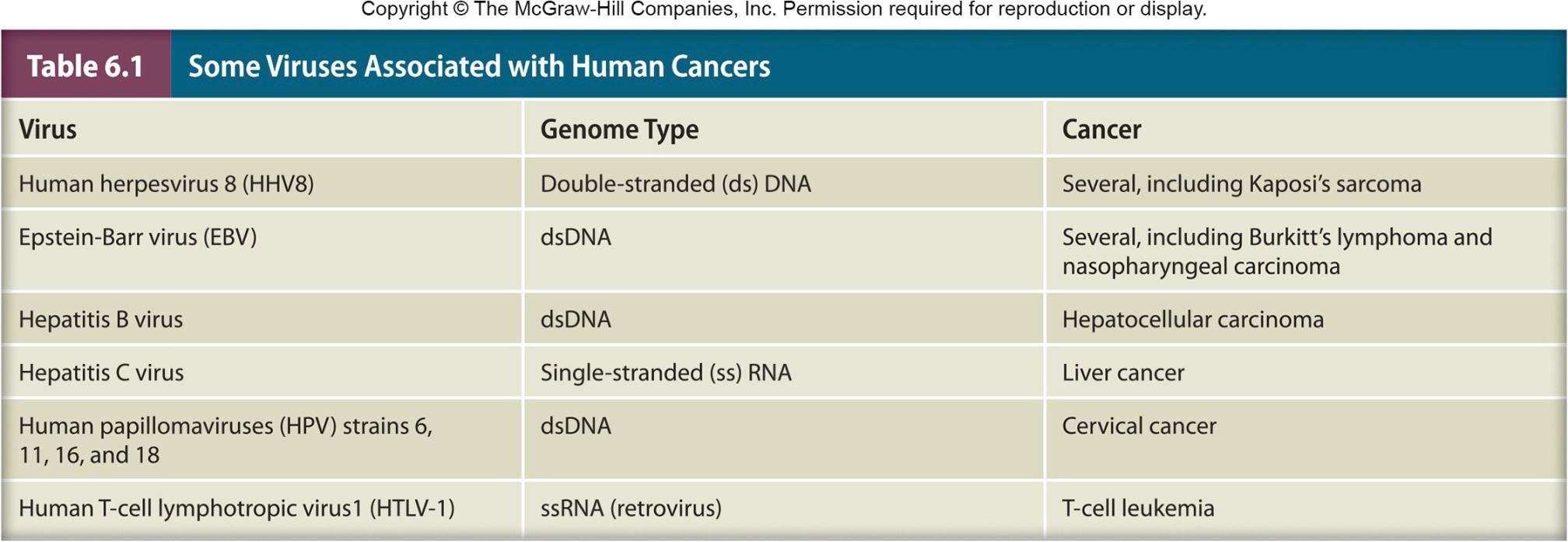
1. Possible Cancer Cause
Viral proteins bind host cell tumor suppressor proteins
Carry oncogene into cell and insert it into host genome
Altered cell regulation
Insertion of promoter or enhancer next to cellular oncogene
五、Cultivation and enumeration of viruses
Hosts for Bacterial and Archael Viruses
Usually cultivated in broth or agar cultures of suitable, young, actively growing bacteria
Broth cultures lose turbidity as viruses reproduce
Plaques observed on agar cultures
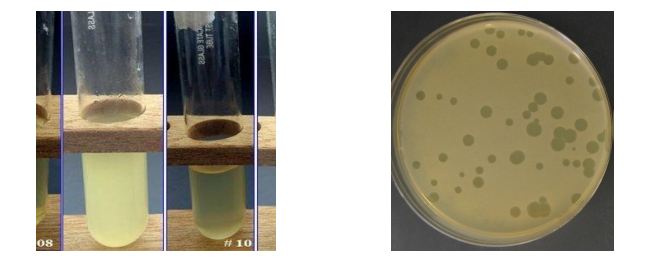
Hosts for Animal Viruses
Tissue (cell) cultures
- viral plaques
Embryonated eggs
Animal inoculation
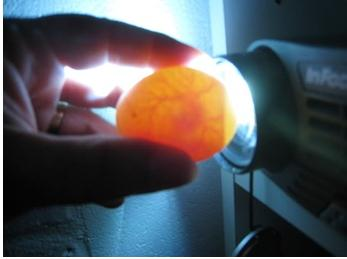
Hosts for Plant Viruses
Plant protoplast cultures
Plant tissue cultures
Suitable whole plants
- may cause localized necrotic lesions (局部坏死性病变) or generalized symptoms of infection
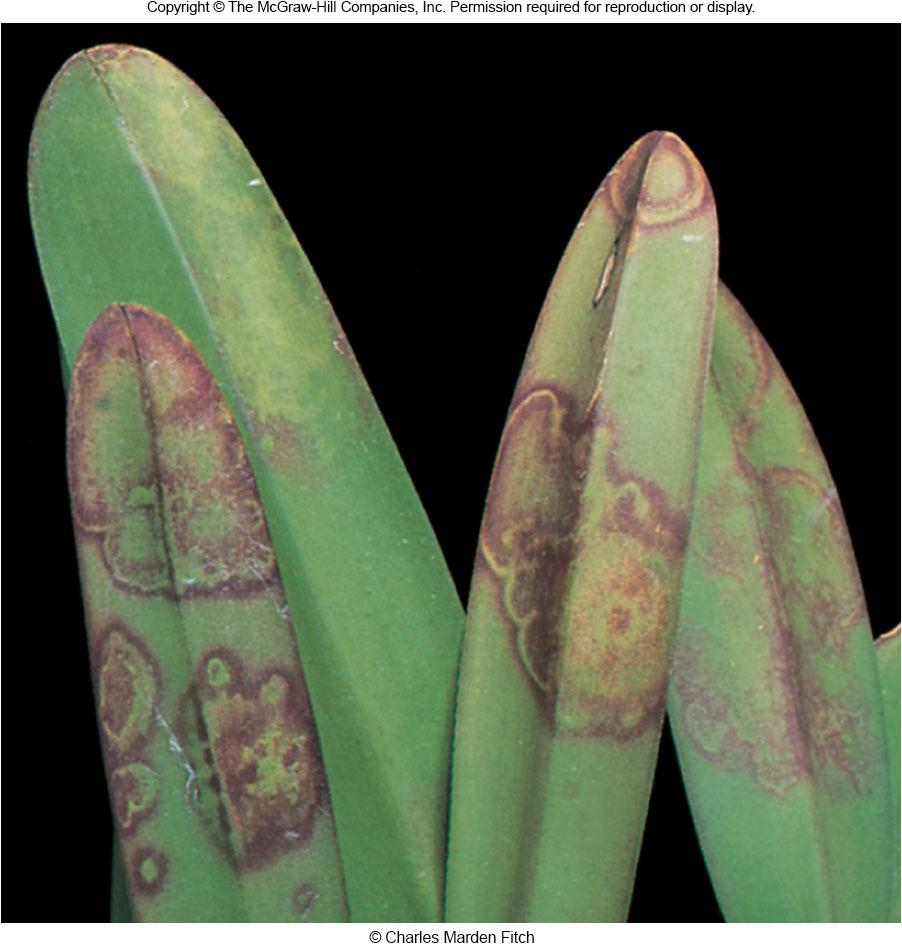
Quantification of Virus
Direct counting – count viral particles
Indirect counting by an observable of the virus
plaque assays
hemagglutination assay
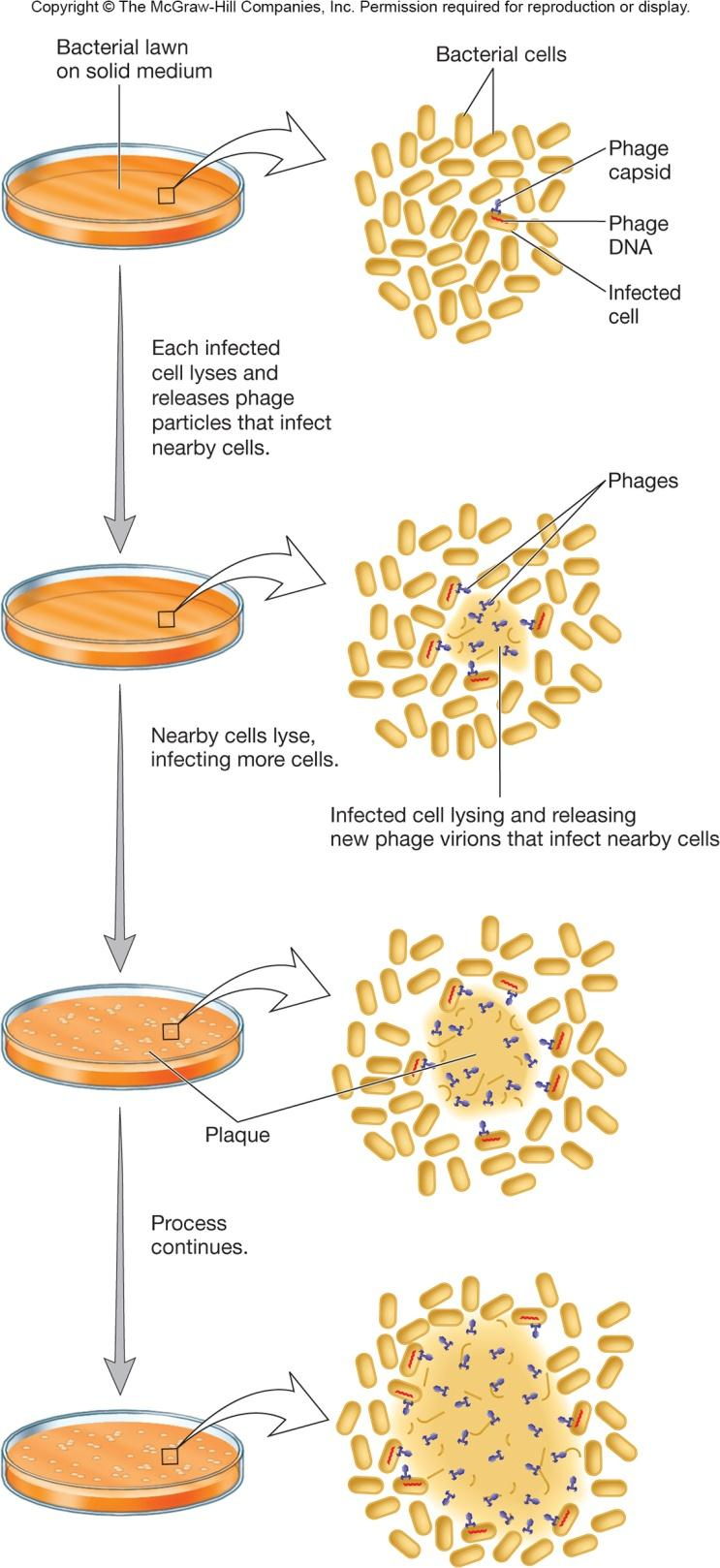
1. Hemagglutination Assay
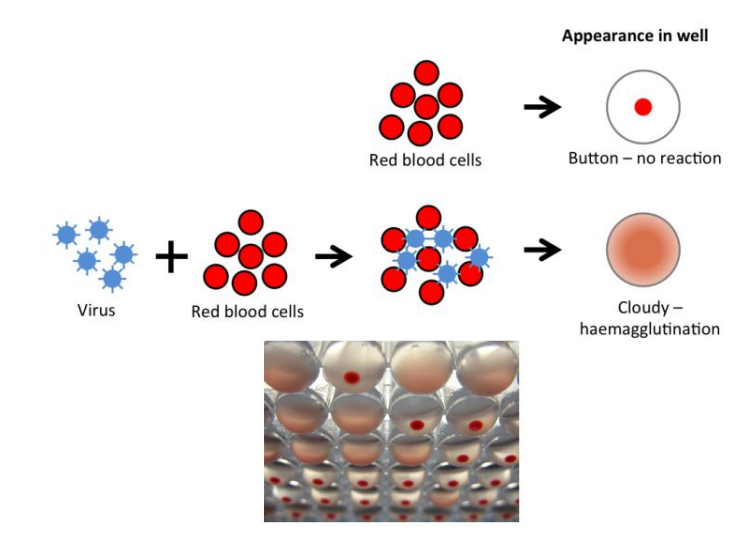
Measuring Biological Effects
Infectious dose and lethal dose assays
- determine smallest amount of virus needed to cause infection (ID) or death (LD) of 50% of exposed host cells or organisms ($ID_{50}$ or $LD_{50}$)
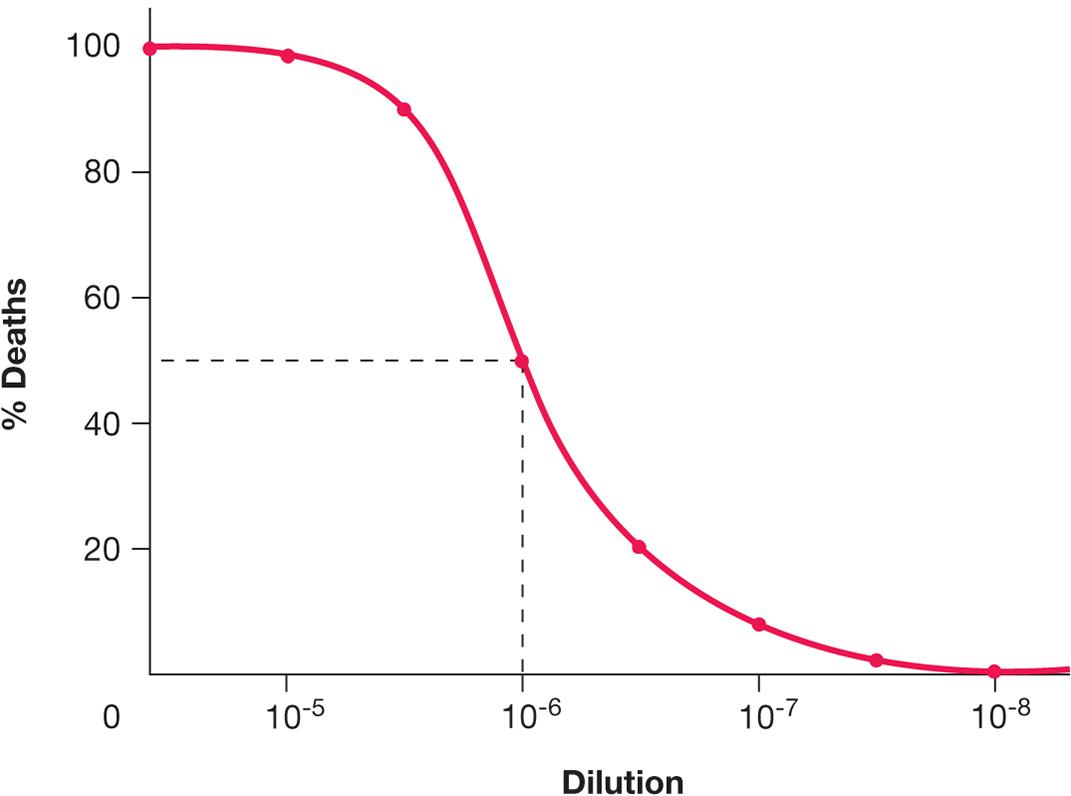
六、Viroids, satellites, and prions
Viroids 类病毒
类病毒是一种具有传染性的单链RNA病原体。它比病毒要小,且没有典型病毒所有的蛋白质外壳。类病毒为严格寄生物,专一性很强,通常感染高等植物,并集成到植物的细胞核内进行复制。类病毒通常通过种子或花粉传播。类病毒最早由在美国工作的瑞士学者迪纳(Theodor O. Diener)于1971年在马铃薯纺锤块茎病中发现。
infectious agents composed of closed, circular ssRNAs
do not encode gene products
requires host cell DNA-dependent RNA polymerase II to replicate
cause plant diseases
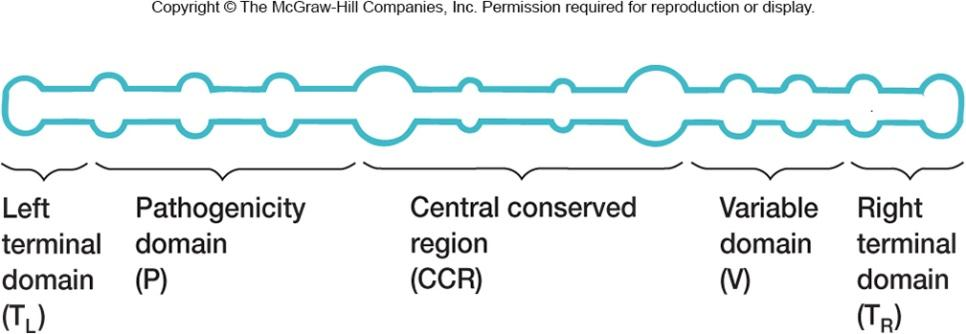
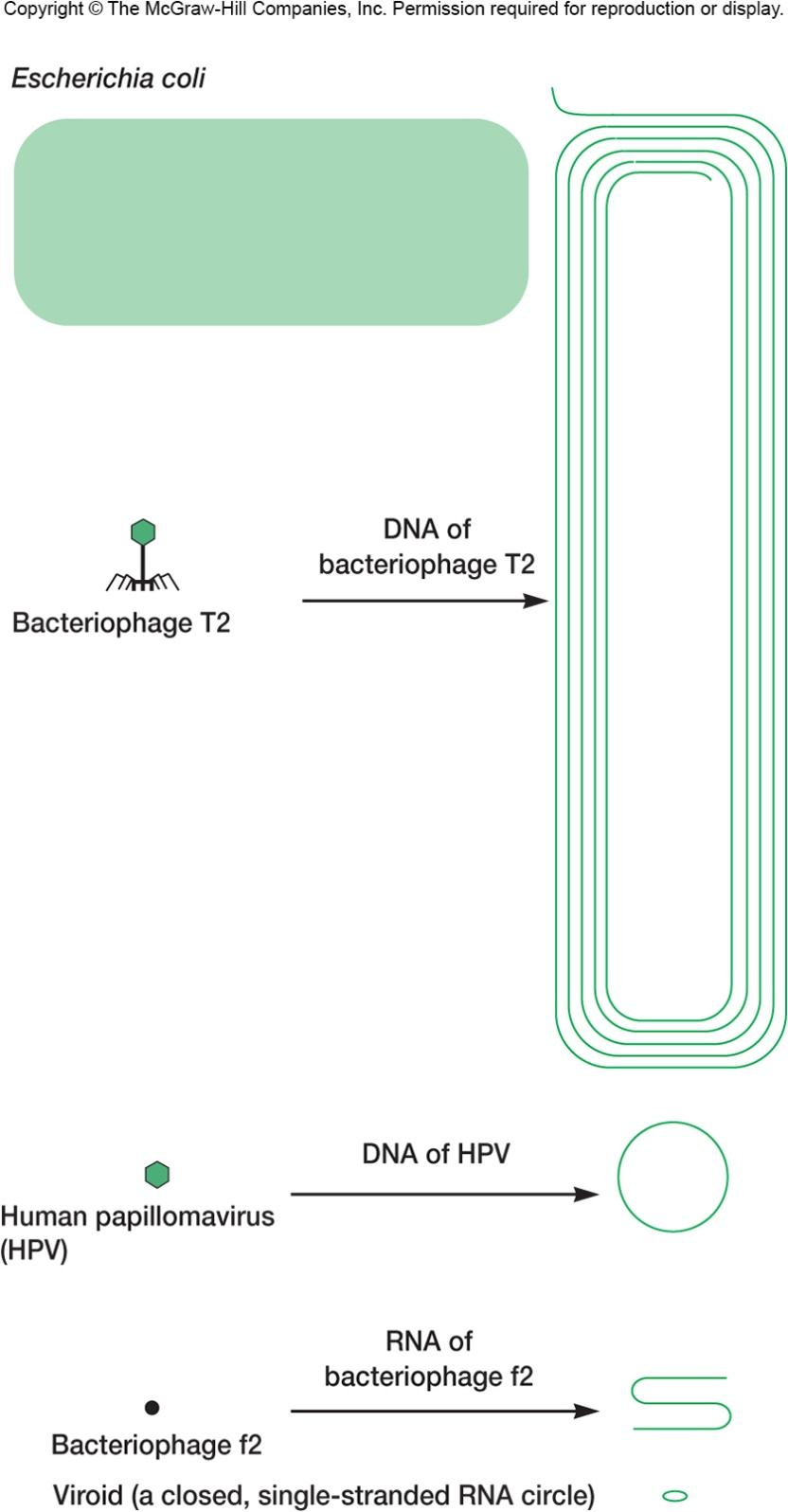
Satellites
Infectious nucleic acids (DNA or RNA)
Satellite viruses encode their own capsid proteins when helped by a helper virus
Satellite RNAs/DNAs do NOT encode their own capsid proteins
Encode one or more gene products
Require a helper virus for replication
- human hepatitis D virus is satellite and requires human hepatitis B virus
Prion
All prion caused diseases
have no effective treatment
result in progressive degeneration of the brain and eventual death
$PrP^{C}$ (PrP, prion protein; C stands for Cellular), $PrP^{Sc}$ (Sc stands for Scrapie)
